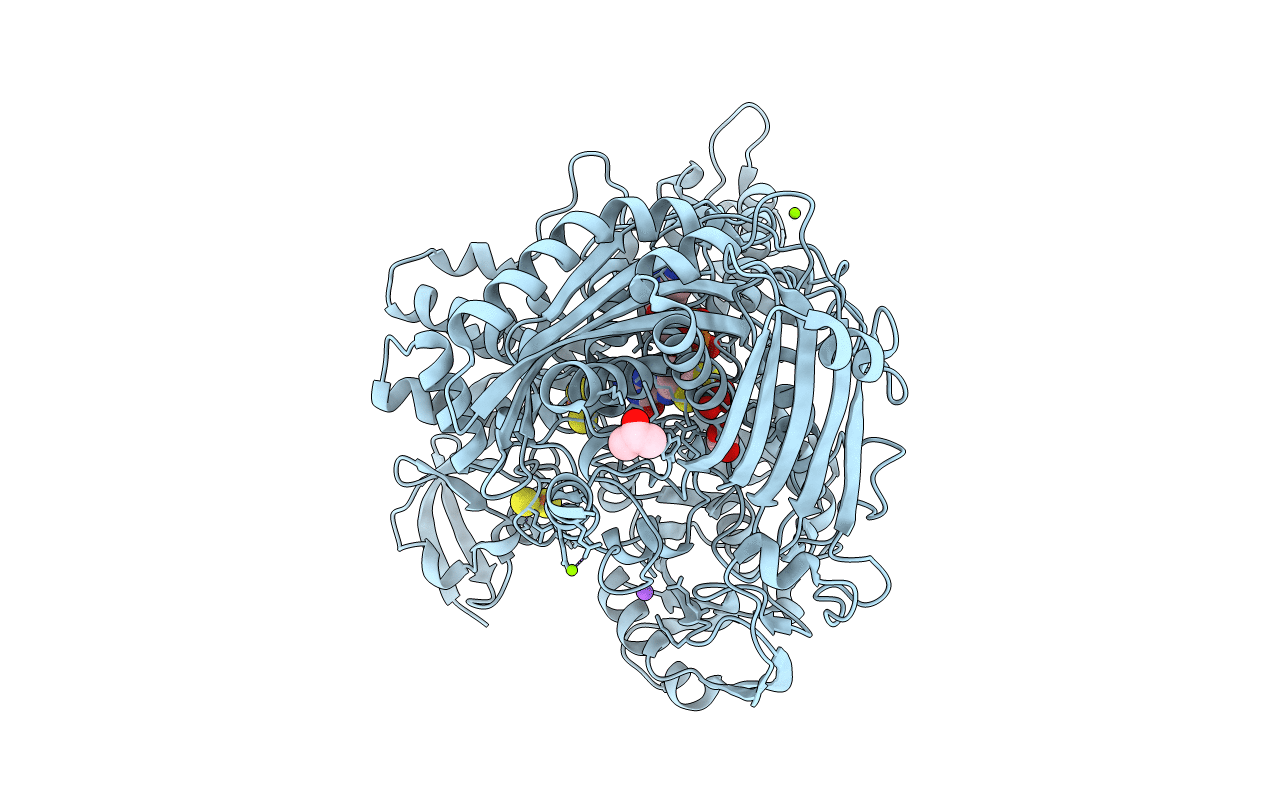
Deposition Date
2013-09-27
Release Date
2014-01-15
Last Version Date
2024-11-13
Entry Detail
PDB ID:
4C80
Keywords:
Title:
Aldehyde Oxidoreductase from Desulfovibrio gigas (MOP), soaked with hydrogen peroxide
Biological Source:
Source Organism:
DESULFOVIBRIO GIGAS (Taxon ID: 879)
Method Details:
Experimental Method:
Resolution:
1.50 Å
R-Value Free:
0.13
R-Value Work:
0.10
R-Value Observed:
0.10
Space Group:
P 61 2 2


